Publications
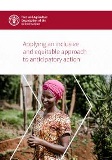
Applying an inclusive and equitable approach to anticipatory action
05/2020
An inclusive approach to anticipatory action will have a nuanced and context-specific understanding of the ways inequalities impact vulnerability and resilience.

Addressing the impacts of COVID-19 in food crises (May update)
05/2020
At the beginning of April, the 2020 edition of the Global Report on Food Crises was issued, presenting a stark warning for the future.
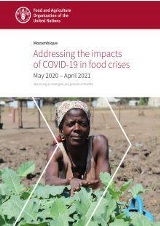
Mozambique: Addressing the impacts of COVID-19 in food crises (May 2020 – April 2021)
05/2020
This national response plan details FAO's programme of work in Mozambique to help combat the fallout of COVID-19 on an already unfolding food crises among vulnerable sections of the population.

Social Protection and COVID-19 response in rural areas
05/2020
Measures to contain the spread of COVID-19 include strong restrictions of movement which dramatically change daily lives and impact agricultural livelihoods.
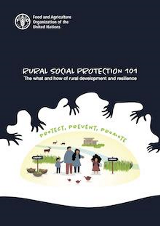
Rural Social Protection 101: The what and how of rural development and resilience
05/2020
In an effort to quickly and effectively describe the role - and different perspectives - of social protection in the context of FAO's mandate, this two-sided infographic focuses on the work we carry out with rural populations on one side, and with governments and other relevant players on the other.
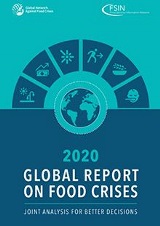
Global Report on Food Crises 2020
04/2020
The Global Report on Food Crises (GRFC) 2020 is the result of a joint, consensus-based assessment of acute food insecurity situations around the world by 16 partner organizations, facilitated by the Food Security Information Network (FSIN).
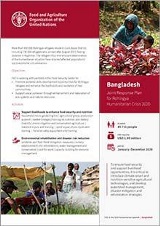
Bangladesh: Joint Response Plan for Rohingya Humanitarian Crisis 2020
04/2020
More than 910 000 Rohingya refugees reside in Cox’s Bazar District, including 730 000 refugees who arrived after August 2017, fleeing violence in Myanmar.
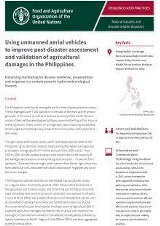
Using unmanned aerial vehicles to improve post-disaster assessment and validation of agricultural damages in the Philippines
04/2020
In 2015, the Department of Agriculture (DA) and the Food and Agriculture Organization of the United Nations (FAO) collaborated to pilot an unmanned aerial vehicles (UAV)-based methodology for pre- and post-disaster assessment in the Bicol and Davao Regions in order to mainstream innovative ways to enhance Disaster Risk Reduction (DRR) in the agriculture sector.

FAO's role in humanitarian contexts: Saving lives through stronger, more resilient livelihoods - Revised version
04/2020
The number of people experiencing hunger – both chronic and acute – has been persistently high in recent years.

Coronavirus disease 2019 (COVID-19): Addressing the impacts of COVID-19 in food crises
04/2020
The document presents FAO's component of the COVID-19 Global Humanitarian Appeal, focusing on maintaining operations in food crisis contexts, anticipating the secondary impacts of the pandemic and related containment efforts on the world's most vulnerable people and sustaining critical food supply chains to avert future food crises.
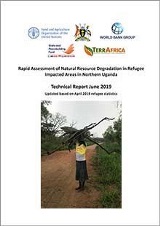
Rapid Assessment of Natural Resource Degradation in Refugee Impacted Areas in Northern Uganda
04/2020
This report summarizes the main findings and recommendations of the assessment, updated to reflect the most recent (April 2019) refugee population figures.
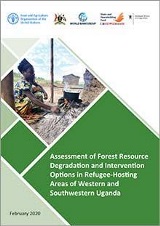
Assessment of Forest Resource Degradation and Intervention Options in Refugee-Hosting Areas of Western and Southwestern Uganda
04/2020
Uganda is currently hosting over 1.3 million refugees making it the largest refugee host country in Africa.
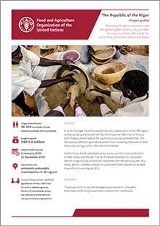
Providing emergency assistance and strengthening the resilience of vulnerable farming households affected by the 2019 cereal production deficits and floods in the Niger: Project profile
03/2020
In 2019, the Niger faced increased insecurity, particularly in the Diffa region and areas along the border with Burkina Faso and Mali, mainly Tahoua and Tillabery, which add to the country’s structural vulnerabilities.

The Syrian Arab Republic: Regional Refugee and Resilience Plan 2020 – 2021
03/2020
The conflict in the Syrian Arab Republic continues to drive the largest refugee crisis in the world. In addition to violence, people face widespread unemployment, lack of formal livelihood opportunities and natural resources degradation that undermine food security.
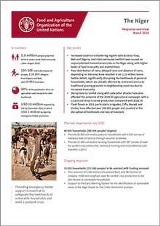
The Niger: Response overview - March 2020
03/2020
Increased insecurity and intercommunal conflict in the Niger have exacerbated existing vulnerabilities linked to the effects of natural disasters, epidemic diseases, plant pests and structural issues, causing an unprecedented humanitarian crisis in the country.
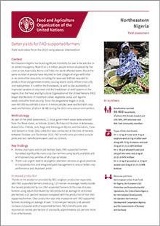
Nigeria: Better yields for FAO-supported farmers
03/2020
Northeastern Nigeria has faced significant instability for over a decade due to an armed insurgency. More than 1.8 million people remain displaced by the crisis across Adamawa,
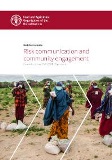
Guidance note: Risk communication and community engagement
03/2020
Information is a form of assistance in itself. Access to accurate information can allow people to make informed decisions to protect themselves.
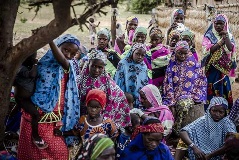
FAO in the 2020 humanitarian appeals
03/2020
For the past three years the number of people facing acute food insecurity has been persistently above 100 million. Conflict and insecurity are the main drivers of hunger, exacerbated by climate shocks and economic instability. Many countries are facing a combination of two or all of these drivers at the same time, resulting in major food crises.
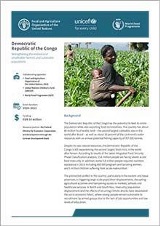
Democratic Republic of the Congo: Strengthening the resilience of smallholder farmers and vulnerable populations
03/2020
Despite its vast natural resources, the Democratic Republic of the Congo is still experiencing the second largest food crisis in the world after Yemen.

